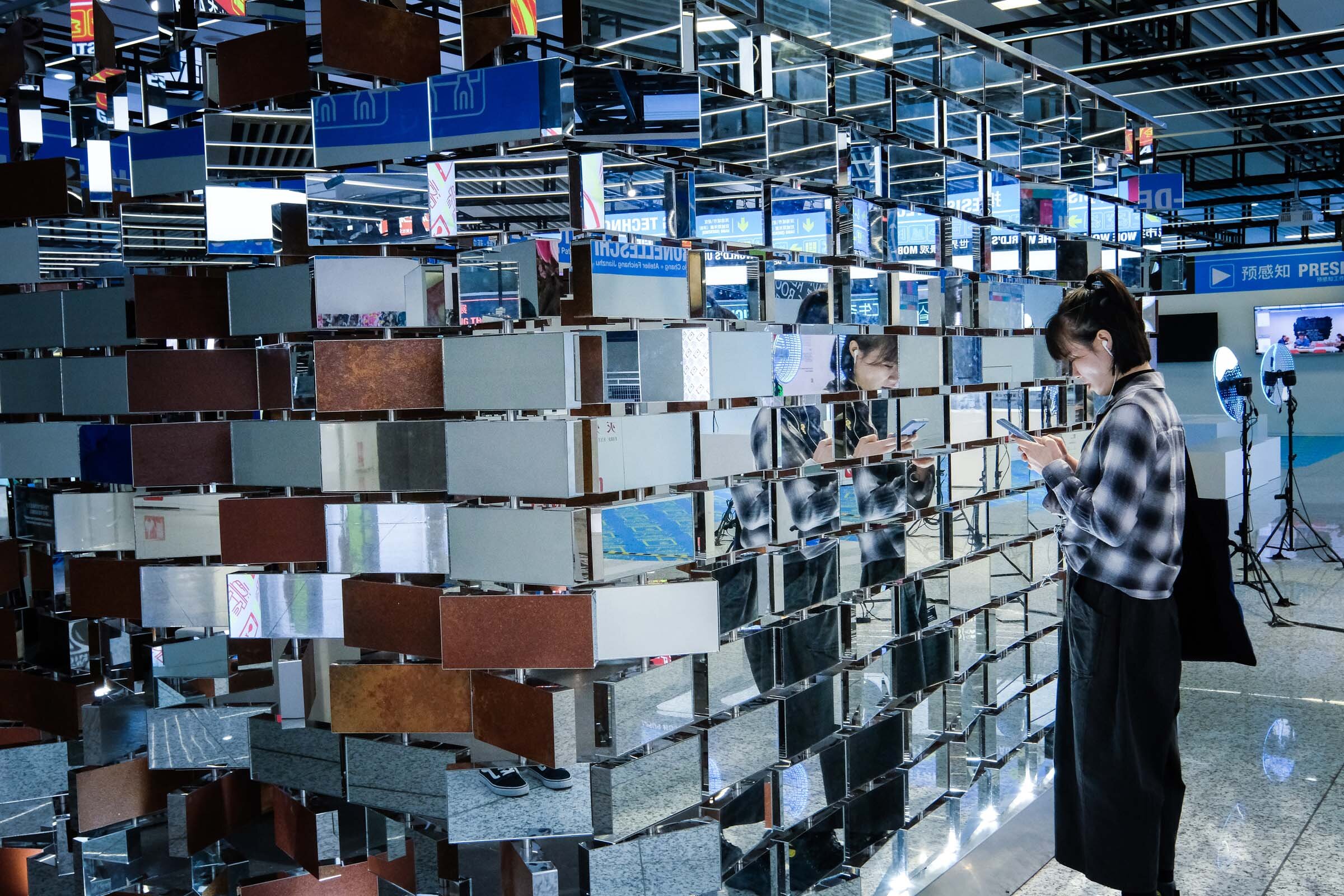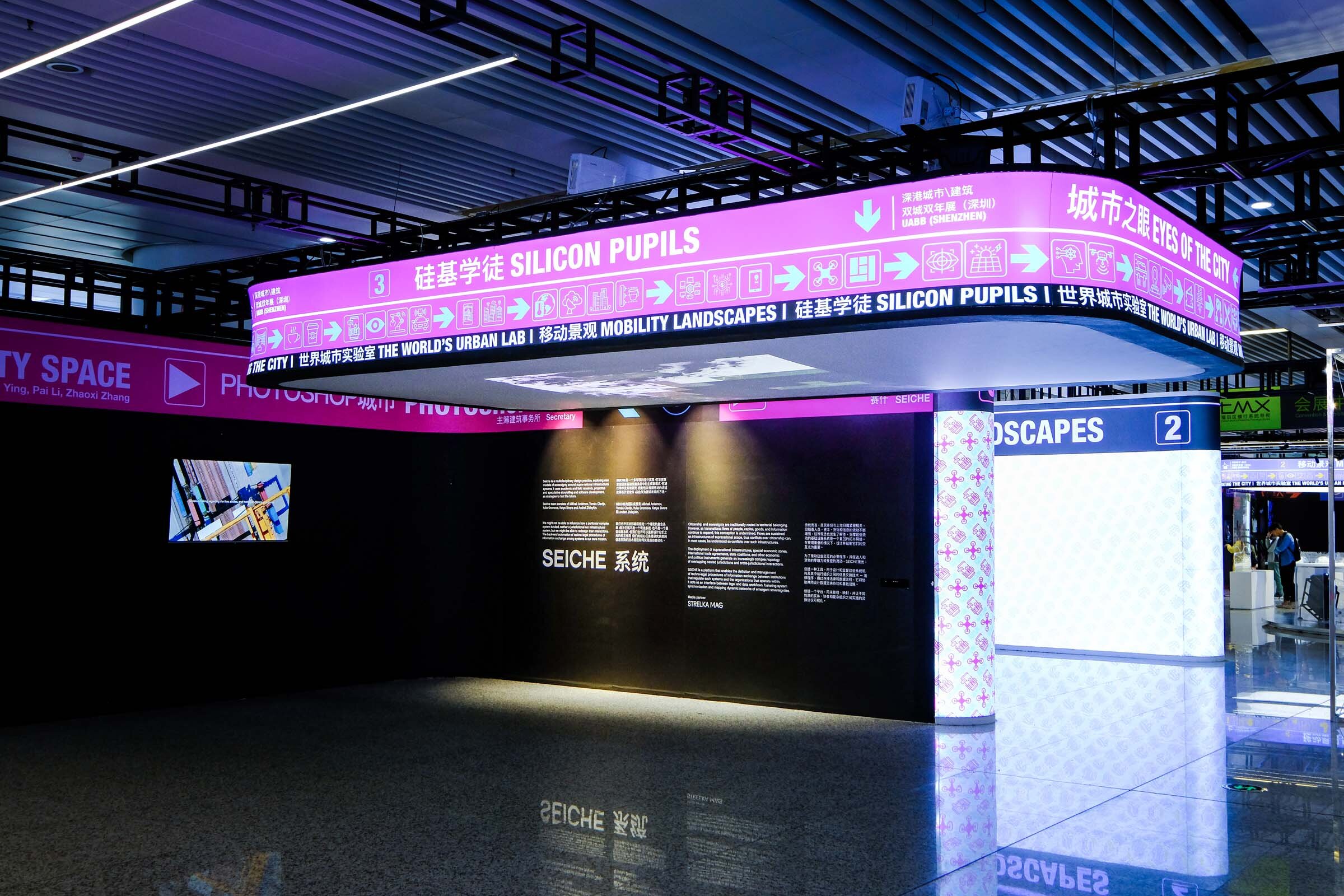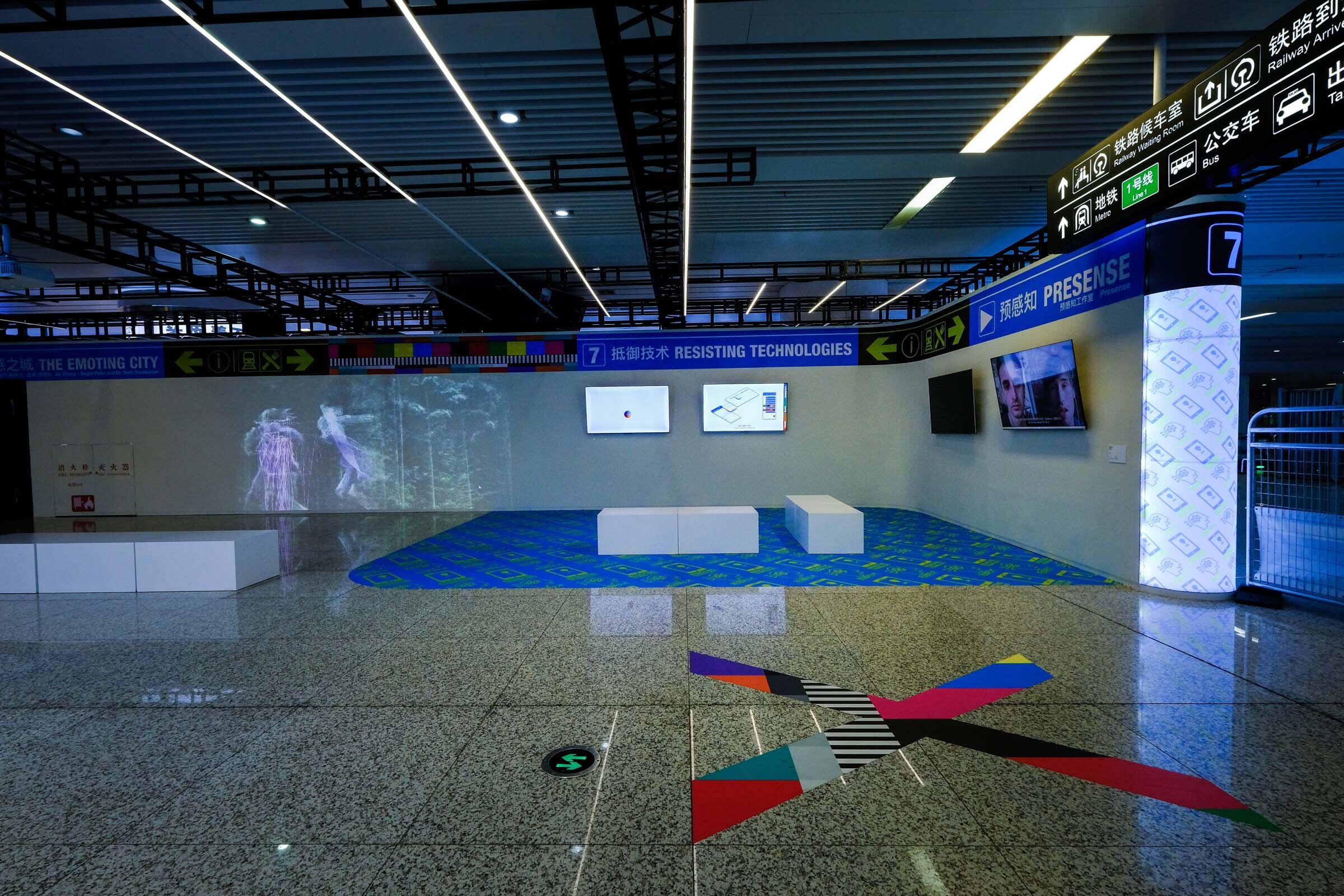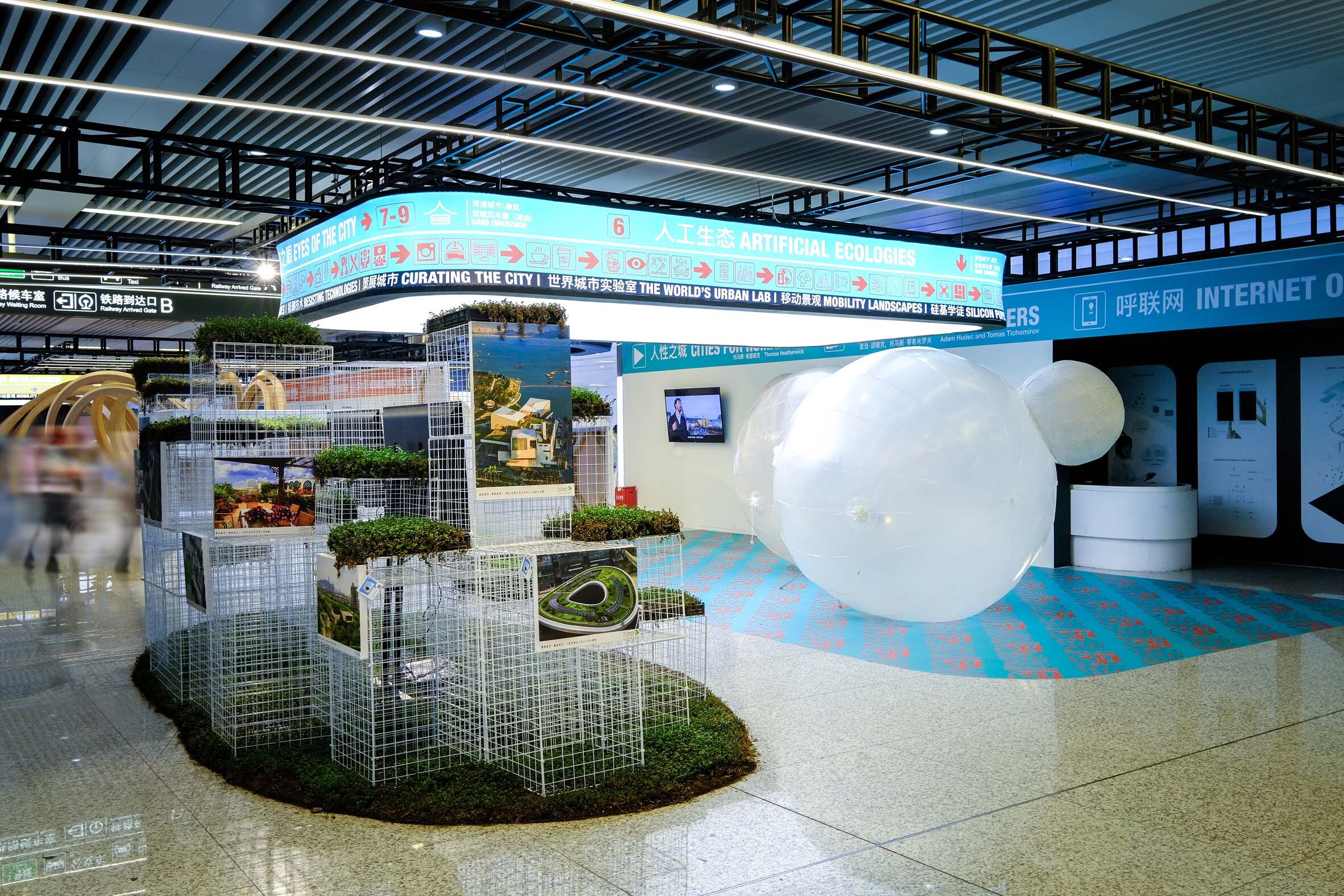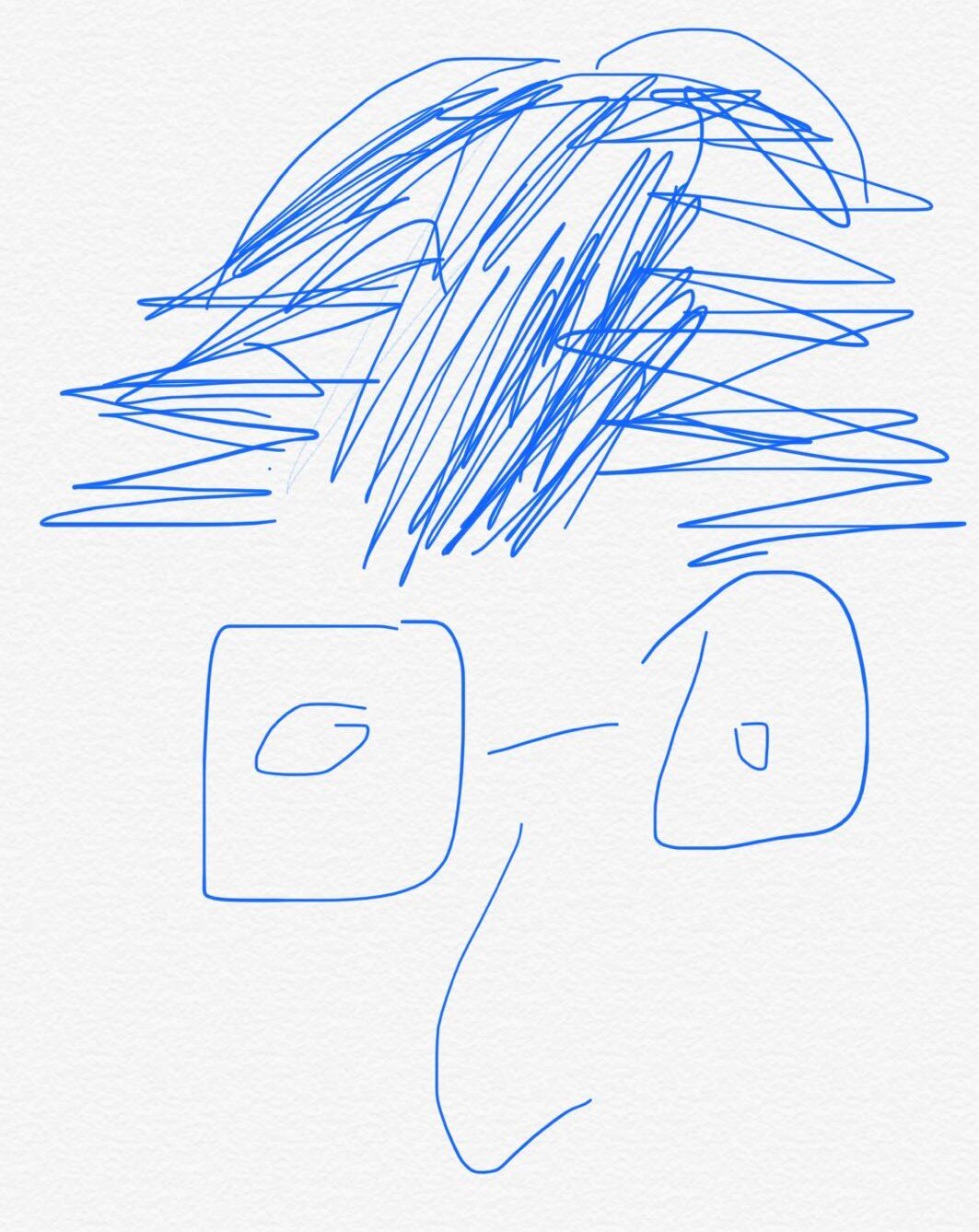
“Eyes of the City” 2019 Shenzhen Biennale(UABB)
Duration_ Mar. 2019 - Feb.2020Institution_ Carlo Ratti AssociatiPosition_ HE Xingxin, Assistant Curator
Curatorial Statement
After Jane Jacob’s “eyes on the street,” we are now entering the era of the “Eyes of the City.” What happens, then, to people and the urban landscape when the sensor-imbued city is able to gaze back?
在简·雅各布斯的“街道之眼”之后,我们现在正进入“城市之眼”的时代。“当充满传感器的城市拥有了视觉能力,就像它拥有“眼睛”一般,到底会发生什么?”
Exhibitions
From the beginning of the Biennale(Mar. 2019), I has begun my position as Assistant Curator under the supervision by Chief Curator Prof. Carlo Ratti and Execution Curator Daniele Belleri. The “Eyes of the City” exhibition consists of eight sub-sections, each of them exploring a different way in which new technologies are impacting urban life.
从2019年三月初起,我便以助理策展人的身份在总策展人卡洛·拉蒂和执行策展人贝丹尼手下参与了整个策展周期。"城市之眼 "展览由八个分展区组成,每个分展区都在探索新技术对城市生活的不同影响。
1 | THE WORLD’S URBAN LAB 世界城市实验室
“Instant City”. “Miracle City”. “Factory of the world”. In the last four decades, Shenzhen has earned many labels. Old definitions, however, can hardly grasp the future prospects of this metropolis. Few other places on the planet have been able to attain a similarly fine-grained integration of new technologies with their urban fabric. In light of this experimentation, Shenzhen stands out as one of the sites where it is possible to explore the impact of an “Eyes of the City” scenario on the built environment at its most advanced stage. It is the world’s urban lab. “即时之城”、“奇迹之城”、“世界工厂”。在过去的40年里,深圳被贴上了许多标签。然而,陈旧的定义很难把握这个大都市的未来前景。地球上很少有其他地方能够同样地深入集成数字技术和城市构造。根据这一实验,深圳脱颖而出,作为探索“城市之眼”对先进阶段建筑环境影响的场地之一。这就是世界城市实验室。

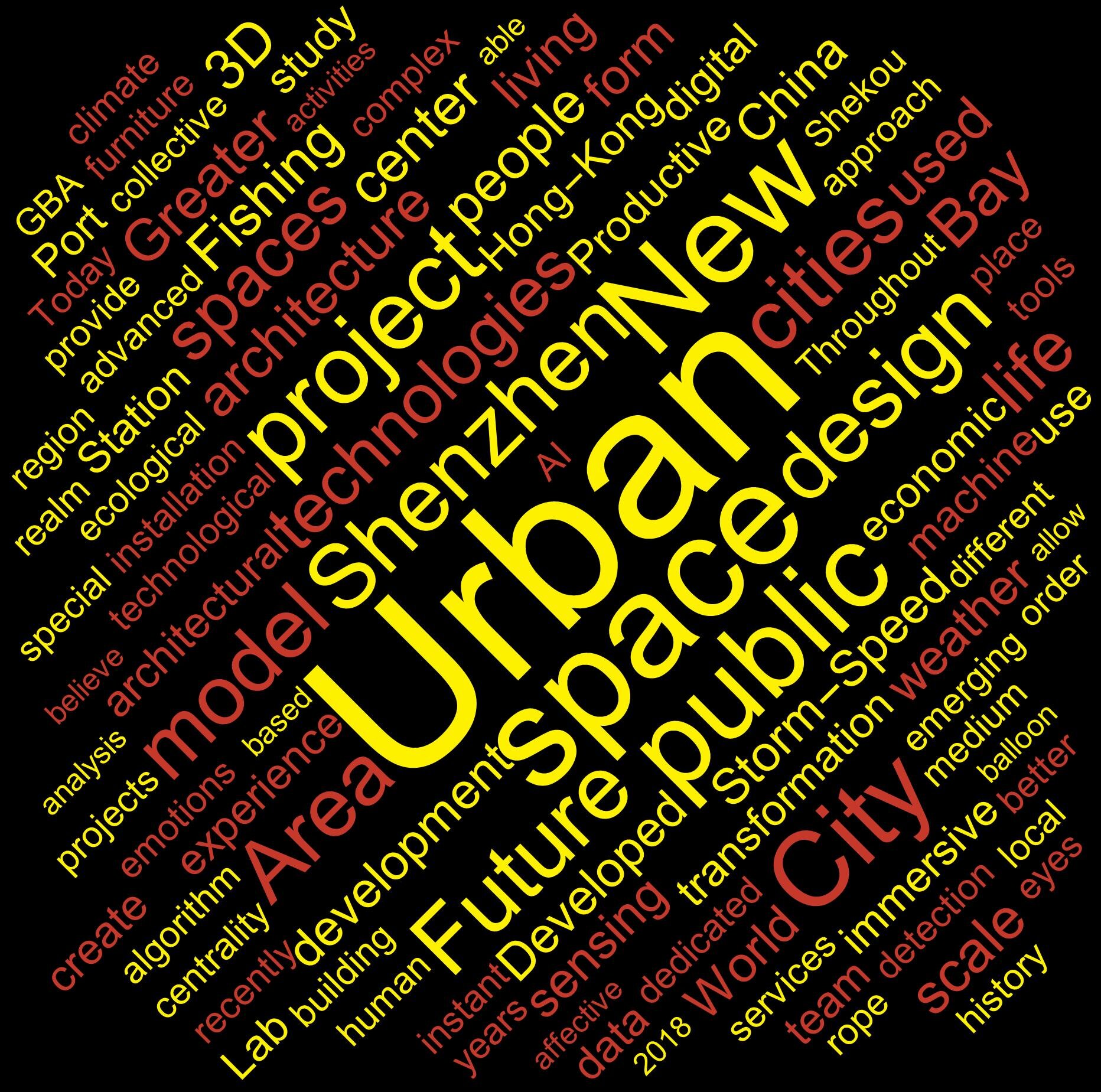

2 | MOBILITY LANDSCAPES 移动新域
Mobility is at a crossroads. The introduction of self-driving technology, Artificial Intelligence and new, shared forms of micro-mobility is diversifying the way we get around cities. Furthermore, real time data allows us to increase utilization of ride-sharing. As vehicles change form and become more like computers on wheels, thanks to thousands of embedded sensors that collect information on users’ preferences and the state of the built environment, mobility gives us new instruments to better comprehend our cities – and mold them through data. 移动性正处于交叉路口。无人驾驶技术、人工智能和新型微型交通共享的引入,已经使我们在城市中的出行方式变得多样化。此外,实时数据让我们增加了共享骑乘的利用率。随着汽车改变了形式并且变得更像带轮子的电脑,也多亏了成千上万的嵌入式传感器收集了用户的偏好信息和建筑环境的状态,移动性带给了我们新的工具,以便我们更好地了解城市,并用数据塑造它们。



3 | SILICON PUPILS 硅基学徒
Mobility is at a crossroads. The introduction of self-driving technology, Artificial Intelligence and new, shared forms of micro-mobility is diversifying the way we get around cities. Furthermore, real time data allows us to increase utilization of ride-sharing. As vehicles change form and become more like computers on wheels, thanks to thousands of embedded sensors that collect information on users’ preferences and the state of the built environment, mobility gives us new instruments to better comprehend our cities – and mold them through data. 移动性正处于交叉路口。无人驾驶技术、人工智能和新型微型交通共享的引入,已经使我们在城市中的出行方式变得多样化。此外,实时数据让我们增加了共享骑乘的利用率。随着汽车改变了形式并且变得更像带轮子的电脑,也多亏了成千上万的嵌入式传感器收集了用户的偏好信息和建筑环境的状态,移动性带给了我们新的工具,以便我们更好地了解城市,并用数据塑造它们。



4 | DIGITAL SOCIETY 数字社会
New technologies are redefining the notion of citizenship. How can we interpret the “Eyes of the City” idea from this perspective? This section revolves around the interaction between people, technology and space. From observing what can be achieved when data is used to better understand society to using virtual platforms as spaces to collect people’s input, this section explores new ways in which denizens can get involved in the making of the city. 新技术正在重新定义公民的概念。如何从这个角度解读“城市之眼”?本节围绕人、技术和空间之间的互动展开。从观察当数据被用来更好地了解社会时可以实现什么,到使用虚拟平台作为收集人们数据的空间,本节探讨了居民参与城市建设的新方式。



5 | DESIGN INTELLIGENCE 设计智能
The latest advances in Artificial Intelligence pose many ethical questions. How should machines behave? How should buildings imbued with Artificial Intelligence respond to their occupants? This section explores how the quintessential human prerogatives of “téchne” and “logos” can be hybridized with automatisms and algorithms. Ultimately, it showcases how digital technologies are reshaping the ways in which we plan, design and build our cities, and new practices are emerging at the intersection of bits and atoms. 人工智能的最新进展引发了许多道德伦理问题。机器应该如何行使?充满人工智能的建筑应该如何应对居民?本节探讨如何将“téchne”和“logos”这两种人类独有的特权与自动化和算法结合在一起。最终,它将展示新技术如何重塑我们规划、设计和建造城市的方式,因为在比特和原子的交汇处,我们周围的空间已充满了数字数据。



6 | ARTIFICIAL ECOLOGIES 人工生态
Computing is accelerating the hybridization between the natural and the artificial in our cities. Cyborg-ization is moving the natural towards the artificial. But a symmetrical approach is bringing the artificial – and in particular the built environment – towards the natural, thanks to the ubiquitous presence of sensors and actuators. This section explores how the above forces are leading towards a new cybernetic ecology–a network in which everything is connected. 计算正在加速城市中自然与人工的融合。半机械化就是把自然的东西变成人工的东西。但是,由于传感器和驱动器无处不在,一种对称的方法正在把人工——尤其是建筑环境——引向自然。本节探讨上述力量如何引领一种新的控制论生态——一个万物相连的网络。



7 | RESISTING TECHNOLOGIES 抵御技术
Rich Gold famously asked: how smart does your bed have to be, before you are afraid to go to sleep at night? This section explores the spectrum of people’s reactions when confronting intrusive technology. It is divided in two parts: resistance against technology – i.e. when citizens use creativity to defy intrusive technologies – and examples of technology for resistance – i.e. technology which is re-appropriated to become a tool of empowerment. Rich Gold有一个著名的问题:在你晚上害怕睡觉之前,你的床要有多聪明?本节探讨人们在面对技术入侵时的反应。它分为两部分:技术抵御,即公民动用创造力对抗侵入性技术;抵御技术,即技术被重新适配成为赋权的工具。



8 | CURATING THE CITY 策展城市
Over the last 15 years, the Shenzhen Biennale has developed as a platform for engaged urban transformation. This year’s decision to host the exhibition inside the Futian railway station will allow it to reach a much wider audience than normal. It also permits exploring first-hand one of the public spaces that are being actively transformed by the “Eye of the City” condition. Through the specificity of the site and its relationship with the rest of the city, we would like to foster a collective conversation on what Shenzhen could be tomorrow. In this section, we look at the UABB (Shenzhen)’s objective to “curate the city”, acting as a real-scale testing ground for creative practices. 在过去的15年里,深双已经发展成为一个城市转型的平台。本届双年展于福田火车站举办展览的决定,将使展览能够接触到比以往更加广泛的观众。它将探索正被“城市之眼”积极改造的第一手公共空间。通过场地的特殊性和它与城市其他部分的关系,我们希望促进一个关于深圳未来的共同对话。在这个板块,我们展望深双“策展城市”的目标,将其作为一个创造性实践的试验基地。


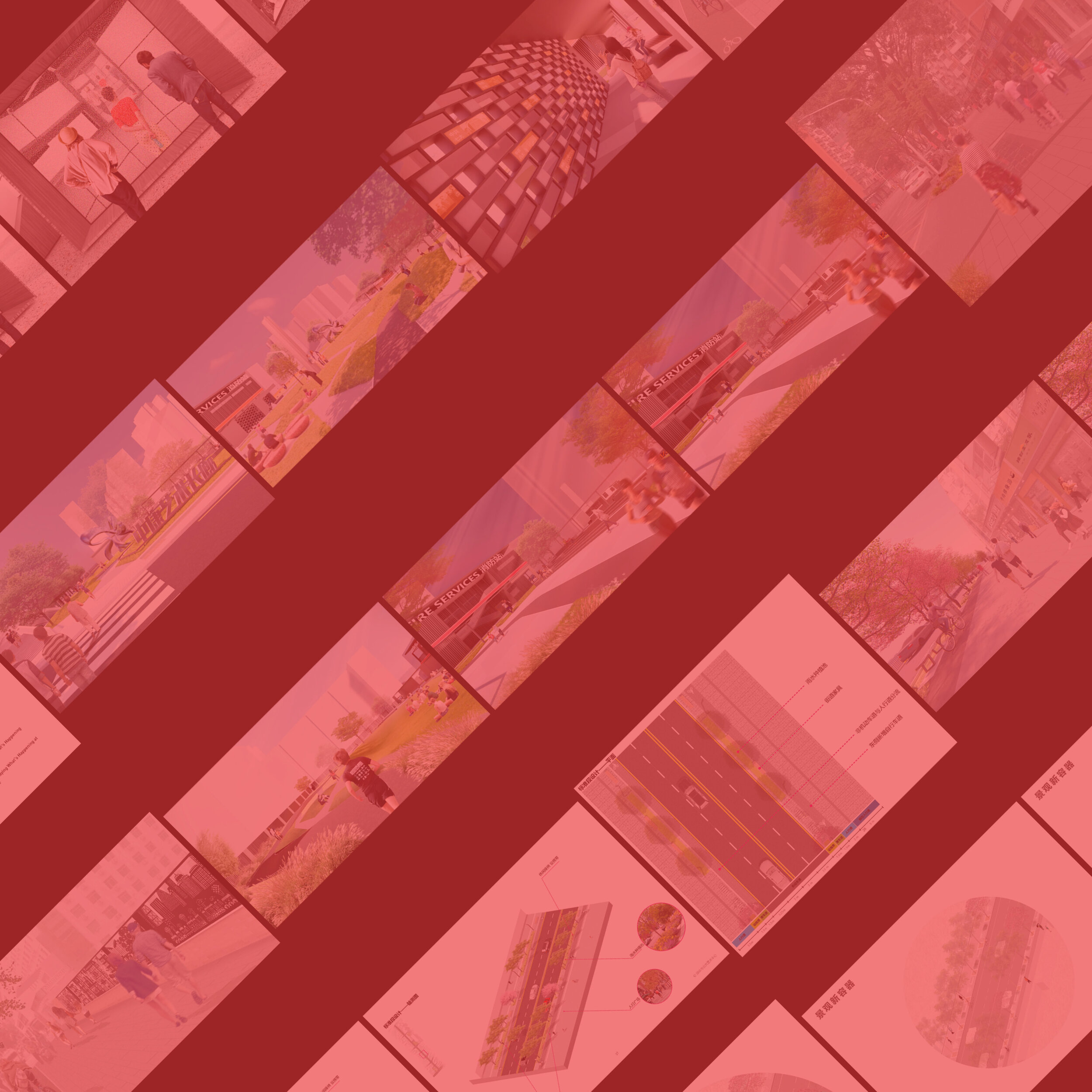
Graph and Network of Section Descriptions
Installation
View of the World from Futian Railway Station
Where is Shenzhen in relationship to the rest of the world? Developed through a special logarithmic scale, this 3D model of the Greater Bay Area (GBA) focuses on Shenzhen and Hong Kong and gradually expands to include large swaths of the planet, although its scale becomes increasingly smaller and distorted as you move away from the center.
This visual approach is inspired by the Romanian-American illustrator Saul Steinberg’s drawing “View from 9th Avenue”. Since 1976, when it was featured on the cover of The New Yorker magazine, Steinberg’s illustration has come to symbolize New York City’s self-perceived centrality in world affairs. It is perhaps inevitable that with centrality - new or old - comes a degree of distortion.
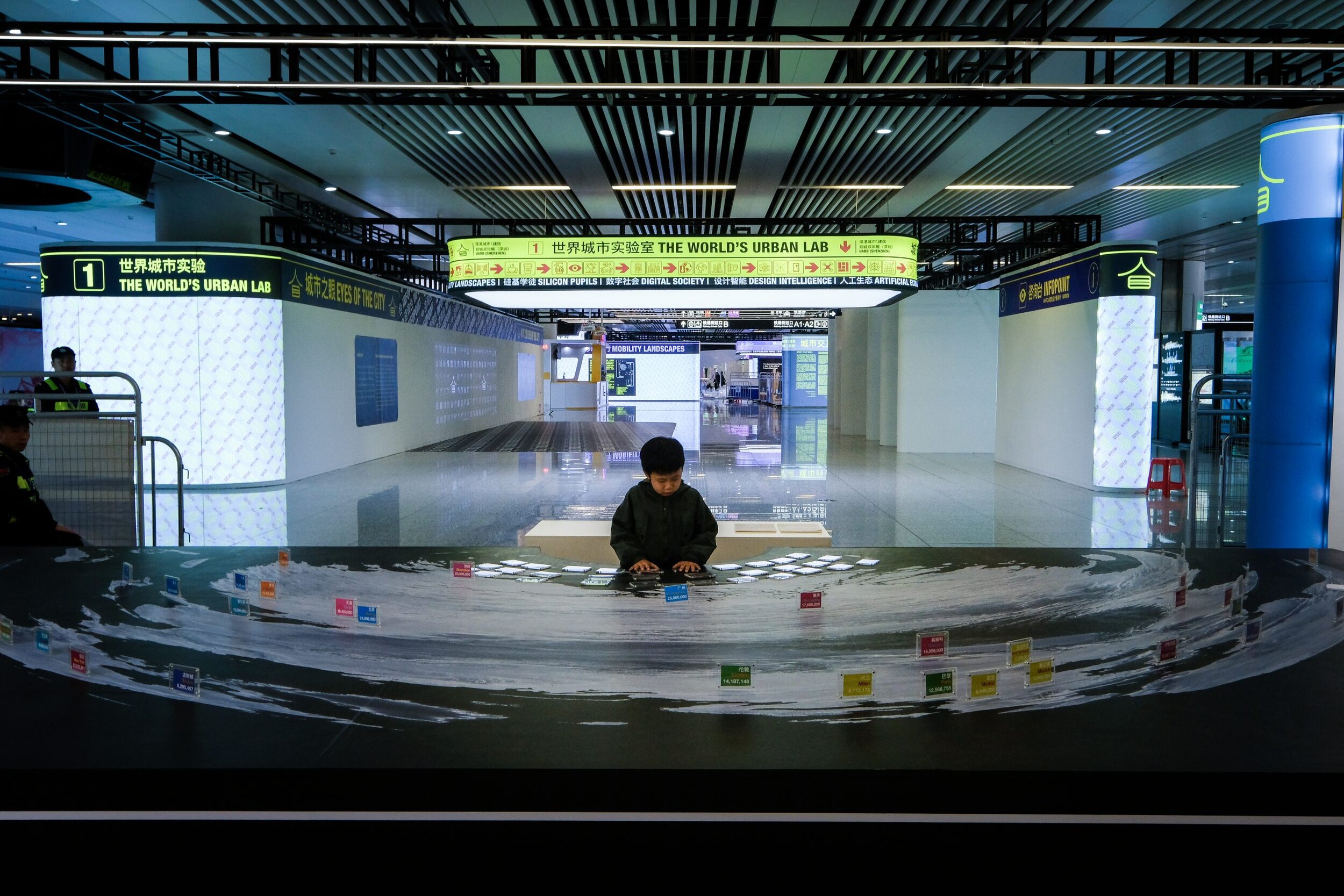
View of the World from Futian Railway Station
Open-source Curatorship
Our team’s work for UABB will respond to the principle of an “Open-source curatorship.” We understand a Biennale on Urbanism and Architecture to be a moment of public discussion that proposes scenarios for the future – in coherence with the conviction that nobody holds a definitive answer on the future of the digitally-augmented city.
Our objective is to implement a critical review of the relationship between technology and the contemporary metropolis, encouraging a participatory approach that sees citizens as the primary subjects that should determine the future of the city.
A data driven project workflow - Save time for data wrangling
Workflow is of tremendous importance to mega project with mass data. So setup a well-organized tangible data control platform makes easier for us to manipulate data and task.
Network analysis of selected exhibitors
Selected exhibitors on each Section
Applicants gender and age distribution
Selected and Rejected Application
Foundational Contributor
In the months leading up to the opening of UABB, we have started a global discussion on our topic – “Eyes of the City”. Working with ArchDaily, I was coordinating on this promotional program with leading architects, designers and writers, like Yung-Ho Chang, Antoine Picon, Daan Roosegaarde, François Penz, etc. We collected from them a critical contribution in response to the theme of our curatorial statement.













